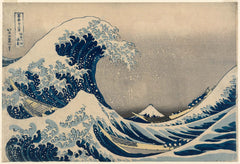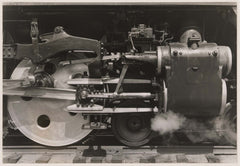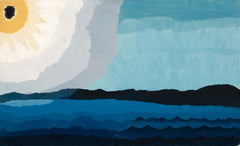This February and throughout 2020, the Museum of Fine Arts, Boston will mark its 150th anniversary. Through the decades, countless collectors, donors and gifts have helped shape the collection of today. With the help of MFA historian and archivist Maureen Melton, we’ve highlighted six artworks from three collectors and the backstories of how they came to leave a lasting impression.
Juliana Cheney Edwards
In the late 19th century, the French art world was slow to appreciate the work of the Impressionists, but many Boston collectors were not. Boston and the MFA became a hub of Impressionism exhibitions and collecting. Three siblings, Robert, Hannah and Grace Edwards, collected 57 paintings by Monet, Renoir, Degas, and others, which they donated to the MFA in honor of their mother, Juliana Cheney Edwards.
Degas, Dancers Resting
Beginning about 1870, Degas explored in his art the lives of dancers at the ballet of the Paris Opera - on stage, in rehearsal, and backstage in private moments. Here,  the artist took his drawing of a seated dancer (at right) and added pieces of paper to create a larger composition, incorporating the figure of another dancer in a red shawl and the large expanse of floor in front of her. Degas left his notations - perhaps measurements of the added strips - visible at right.
the artist took his drawing of a seated dancer (at right) and added pieces of paper to create a larger composition, incorporating the figure of another dancer in a red shawl and the large expanse of floor in front of her. Degas left his notations - perhaps measurements of the added strips - visible at right.
Renoir, Girls Picking Flowers in a Meadow
Renoir spent the summer of 1890 at the country house of fellow Impressionist Berthe Morisot and her husband Eugène Manet, Edouard Manet’s brother. Renoir asked their daughter, Julie, to pose for him, along with her fair-haired cousin, Jeanne Gobillard. Renoir gives the girls—their bonnets elaborately ruffled and ribboned—the fanciful air of shepherdesses in a rococo pastoral, taking his cue from the 18th-century artist François Boucher and his airy, make-believe scenes. With its flowering sapling at left, the picture also reads as an allegory of budding maturity.
country house of fellow Impressionist Berthe Morisot and her husband Eugène Manet, Edouard Manet’s brother. Renoir asked their daughter, Julie, to pose for him, along with her fair-haired cousin, Jeanne Gobillard. Renoir gives the girls—their bonnets elaborately ruffled and ribboned—the fanciful air of shepherdesses in a rococo pastoral, taking his cue from the 18th-century artist François Boucher and his airy, make-believe scenes. With its flowering sapling at left, the picture also reads as an allegory of budding maturity.
The Spaulding Collection
Visionary collectors, William and John Spaulding amassed some of the world’s most remarkable American and European paintings, Japanese prints, and World War I posters, and played a crucial role in shaping the Museum’s cultural heritage. When the brothers donated their world-renowned collection of Japanese prints to the MFA in 1921, they specified that the prints must never be displayed in the galleries, because their fragile colors fade rapidly when exposed to light. As a result, prints like Hokusai’s "Great Wave" are remarkably well-preserved and vibrant.
Hokusai, Under the Wave off Kanagawa
In the series Thirty-Six Views of Mount Fuji, Hokusai drew on his many decades of  experience as an artist to produce a variety of scenes showing the sacred mountain at many different angles, distances, seasons and times of day, using deliberately limited color schemes to create striking visual effects. Here, Mount Fuji is dwarfed by the powerful image of the cresting wave arching above the small fishing boats. This combination of mountain, man and sea remains the most significant of Hokusai’s many dramatic seascapes, and is one reason the “Great Wave” is the most famous of all Japanese woodblock prints.
experience as an artist to produce a variety of scenes showing the sacred mountain at many different angles, distances, seasons and times of day, using deliberately limited color schemes to create striking visual effects. Here, Mount Fuji is dwarfed by the powerful image of the cresting wave arching above the small fishing boats. This combination of mountain, man and sea remains the most significant of Hokusai’s many dramatic seascapes, and is one reason the “Great Wave” is the most famous of all Japanese woodblock prints.
Van Gogh, Houses at Auvers
In May 1890, Van Gogh left the south of France, stopping in Paris to visit his brother Theo before settling in Auvers, northwest of the capital. Upon his arrival in Auvers, he wrote to Theo: “I really felt in Paris that all the noise there wasn’t what I need.” In the quieter village, he painted many of his finest pictures in a flurry of activity before his death in July. This painting depicts the lush landscape and variety of local dwellings. He wrote: “I find the modern villas and the middle-class country houses almost as pretty as the old thatched cottages that are falling into ruin.”
The Lane Collection
A gift in 1990 of 90 Modernist paintings and works on paper from William and Saundra Lane transformed the Museum’s collection of mid-20th century art into one of the finest in the nation. Highlights include paintings by O’Keeffe, Sheeler, Davis, Hartley and Dove. In 2012, Saundra Lane made another remarkable donation of more than 6,000 photographs, including works by Sheeler, Weston and Adams.
Sheeler, Wheels
In 1938 Sheeler was commissioned by Fortune magazine to make six paintings on  the subject of American industrial power. In preparation for his commission, Sheeler made several trips around the country. Each site was searched out and then studied with great care. After deciding on a subject, Sheeler then took two dozen or more negatives of the subject from various positions and directions. One of these photographs has become perhaps his most famous single image: Wheels, which related closely to his painting Rolling Power of the same year. Here the heaviest of machinery is transformed into weightless abstraction lit by the noonday sun. As in the best of Sheeler’s work, the viewer first sees abstraction, a complex layering of horizontals, circles, and subtle diagonals, lights and darks, then recognizes its ‘reality’ as a locomotive, then is torn between the seen and the known.
the subject of American industrial power. In preparation for his commission, Sheeler made several trips around the country. Each site was searched out and then studied with great care. After deciding on a subject, Sheeler then took two dozen or more negatives of the subject from various positions and directions. One of these photographs has become perhaps his most famous single image: Wheels, which related closely to his painting Rolling Power of the same year. Here the heaviest of machinery is transformed into weightless abstraction lit by the noonday sun. As in the best of Sheeler’s work, the viewer first sees abstraction, a complex layering of horizontals, circles, and subtle diagonals, lights and darks, then recognizes its ‘reality’ as a locomotive, then is torn between the seen and the known.
Dove, Sun on the Lake
Like 19th-century American landscape painters, Dove was captivated by the power of nature, and he frequently painted the sun or moon with water. He brought an abstract sensibility to this subject by simplifying forms and focusing on the underlying color relationships. This painting reveals the artist’s sophisticated study of pure color as light, especially in the blues of the sky and the undulating waves of the lake.
Text adapted from MFA Journey by Maureen Melton, Susan Morse Hilles Director of Libraries and Archives, as well as the MFA Publications Sheeler: The Photographs; MFA Highlights: Arts of Japan; and A Guide to the Collections.
Buy these highlighted prints or explore more Bestsellers from the MFA Prints collection.
